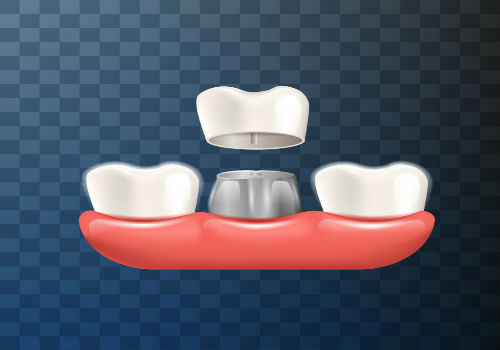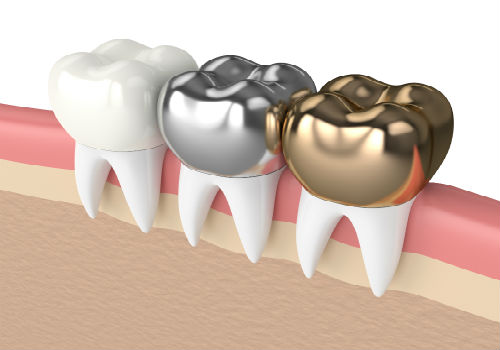A crown is a prosthetic ‘cap’ for a tooth used as part of dental restoration for damaged or unsightly teeth. When done well by an experienced dentist, it should look, feel and work just like a regular tooth. Because each person’s gum and jaw structure is unique, crowns are custom made for every individual patient and stay in your mouth anywhere from ten years to the rest of your life.


Why ceramic porcelain?
Ceramic is an inorganic non-metal used in the fabrication of crowns. As a translucent, glass-like substance, it can mimic the reflective properties of natural teeth, making them appear nearly identical to human teeth. Although there are many varieties of ceramic, the most sought after by dentists and patients are ceramic porcelain crowns, which are aesthetically unmatched when it comes to mimicking the appearance of a natural tooth.
Alternatives to ceramic
The other popular choice of material for crowns is metals, specifically gold. Because of their hardness and malleable nature, they are excellent for molars and pre-molars, the teeth near the back of your mouth that do the bulk of chewing work. Although they undoubtedly have their benefits, the biggest drawback is their opaque nature. They are visible, unsightly and can ruin the appearance of a smile. One solution devised by dentists is to have crowns made from porcelain fused to metal, in an attempt to replicate the natural aesthetic. However, this has limited success and can become a problem if a person’s gum line recedes and exposes the dark metal under the porcelain. Another concern has been the increasing prices of precious metals that make any metal-based crown more expensive than other options.

Why ceramic porcelain crowns are still better
Ceramic porcelain crowns have to a large extent, replaced the use of metal crowns, by overcoming the aesthetic issues the metal created. Traditionally, the first alternative-to-metal crowns were heavily resin-based, which looked better but were easily damaged and often replaced. Over time, the development of ceramic porcelain crowns in Birmingham, MI has adopted the use of leucite-reinforced glass, zirconia and other engineered compounds that overcome the fracturing and chipping issues of resin-based crowns while still preserving the aesthetic advantage. By not using metal compounds, these crowns also avoid wearing down opposing and neighboring teeth during the chewing motion, extending their life and improving the comfort of the patient.


